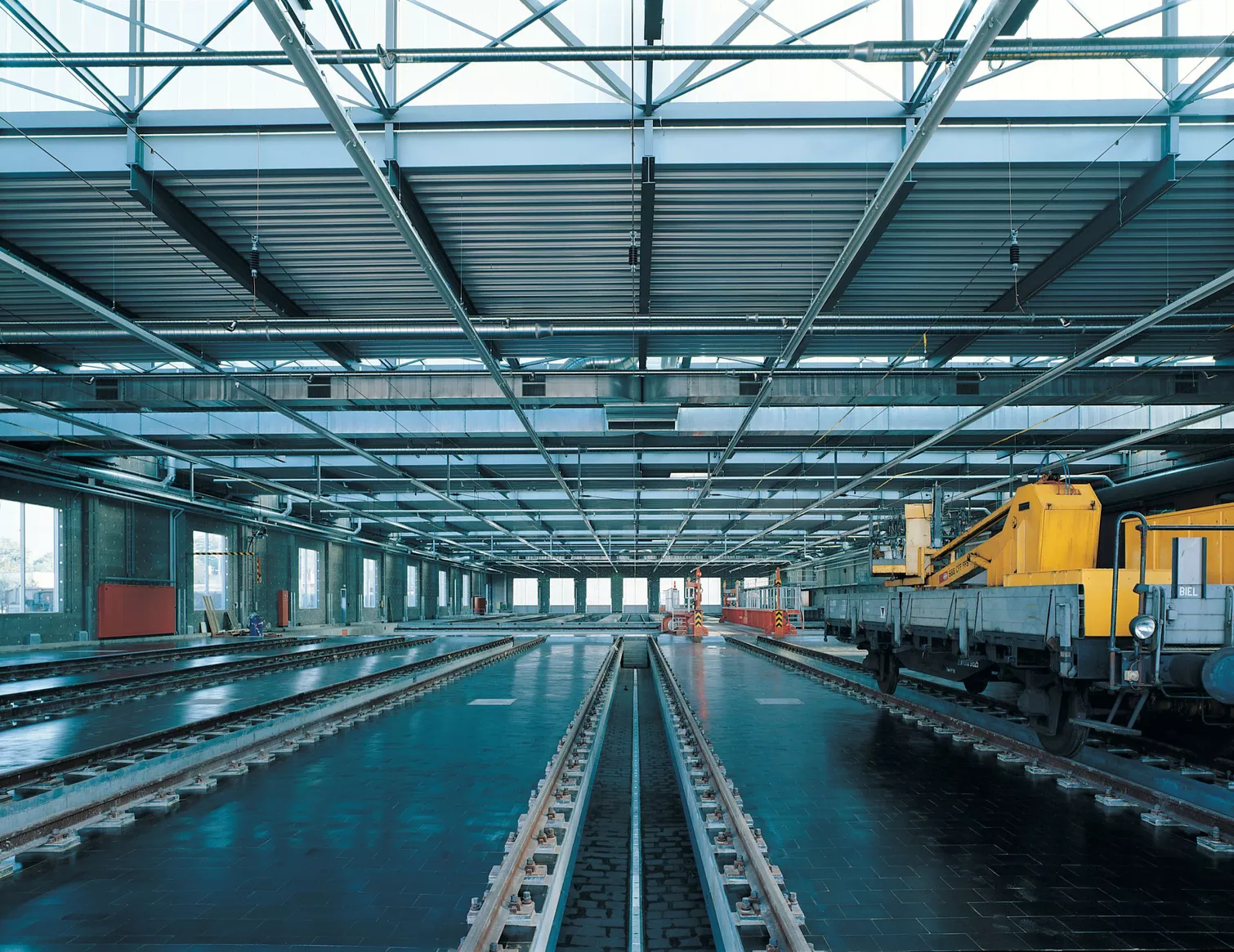The “Pendelzugremise” (PZR) is part of the workshop complex built in 1990 and expanded several times since. It is used for the maintenance and overhaul of train compositions up to 200 metres in length. The building was designed by Herzog & de Meuron and is considered an important architectural landmark. The main problem of the PZR in Basel is severe overheating during summer. Indoor air temperatures rise to over 45°C, especially on the roof-level working platform at a height of around 4 metres, where heat accumulates and creates an extreme thermal load for staff.
The project aims to reduce the air temperature on the roof-level platform to a maximum of 28°C, within technical and economic constraints. A thermal simulation identified the causes of overheating. Based on this, a range of mitigation measures was developed – from passive approaches such as roof fans and supply-air openings via the maintenance doors to active systems such as recirculation cooling.
A key question was how the cooled air could be most efficiently distributed. For this purpose, a flow simulation assessed different air supply solutions (single- or three-pipe systems) and various outlet types (perforated pipes, diffusion grilles, long-throw nozzles). The final solution combines recirculation cooling units in the sawtooth roofs with temperature-controlled roof fans and a three-pipe perforated air distribution system. This combination extracts heat directly at the source, effectively ventilates accumulated hot air in the roof area, and ensures uniform and draught-free air distribution in the work zone. As a result, indoor temperatures can be reduced to below 28°C, creating a significantly more comfortable working environment.
Added value
- Root cause analysis: Precise identification of overheating sources
- Evaluation of options: Objective comparison of different ventilation and cooling strategies
- Optimisation: Determination of the most effective combination of active cooling, air distribution and ventilation
- Traceability: Scientifically sound decision-making basis for stakeholders
Services
- Root cause analysis
A thermal–energy simulation calibrated with measured data was used to map and analyse the current situation. The results show which factors have the greatest impact.
- Comparison of variants
Based on the root cause analysis, passive and active mitigation strategies were tested in an annual thermal simulation to assess their impact on the workplace climate on the platforms.
- Clear presentation of results
For each variant, the evaluation indicates the percentage improvement in temperature, enabling a direct and simple comparison of effectiveness. Passive measures alone are not sufficient to reliably reduce the temperature to 28 °C.
-
Optimisation of air supply using flow simulation
Eight air distribution system variants were tested in the flow simulation to determine the most effective solution. Long-throw nozzles, diffusion grilles and perforated pipes were compared in single- and three-pipe configurations. -
Clear presentation of results
For each variant, the evaluation indicates the percentage improvement in temperature, enabling a direct and simple comparison of effectiveness. Passive measures alone are not sufficient to reliably reduce the temperature to 28 °C. - Numerical flows simulation
The numerical simulation analysed both new concepts and the behaviour of the existing ventilation system. It was found that the current system induces warm air from the sawtooth roofs into the work area. It will therefore be switched off during hot periods in the future. - Verification of thermal comfort
The best-performing solution – a three-strand perforated pipe system – delivers cooled air directly into the workspace with minimal mixing and outperforms both long-throw nozzles and diffusion grilles. Thanks to the low air velocity, draughts can be virtually excluded.
Client
- SBB AG Immobilien
Architect
- Studio|PM GmbH
Processing period
- 2024 - 2024
Services
- Building environmental control, Simulation

